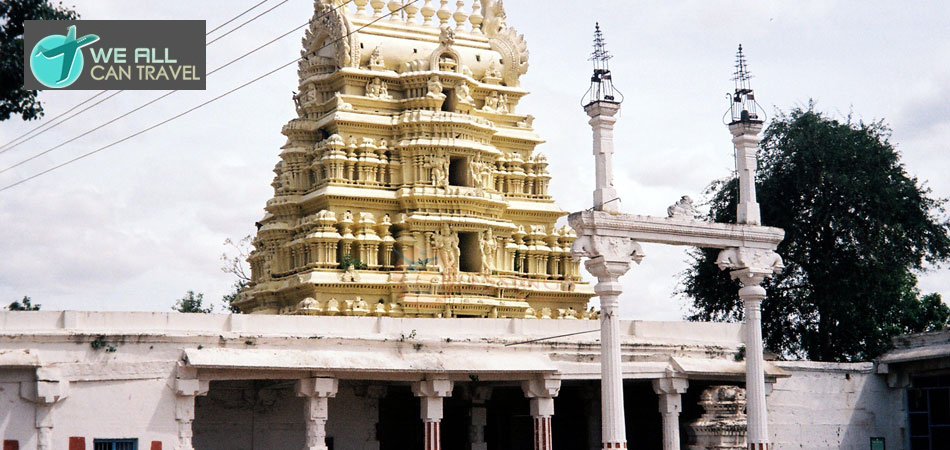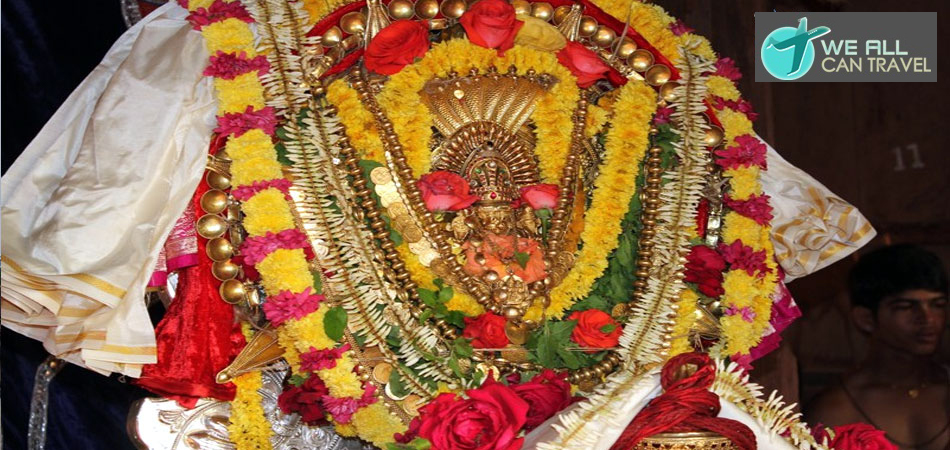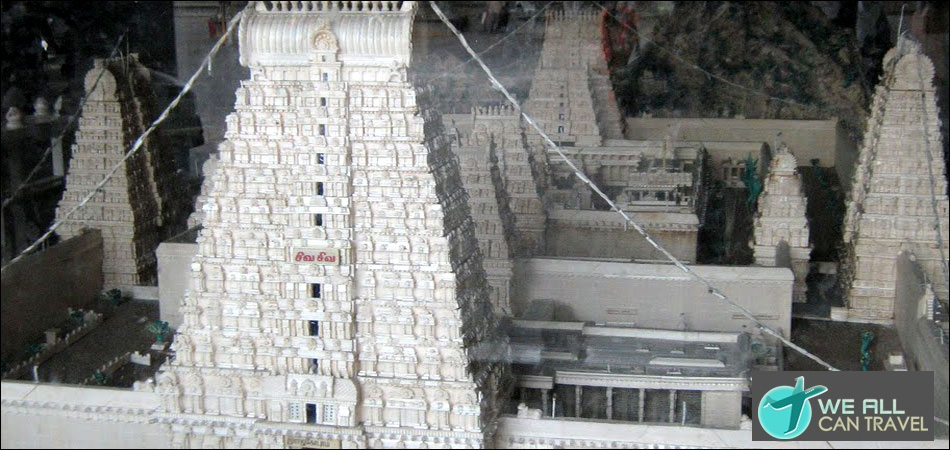Sri Anantha Padmanabhaswamy Temple
Sri Anantha Padmanabhaswamy Temple is located in the heart of Thiruvananthapuram city of Kerala State, South India. This famous temple is dedicated to Lord Vishnu.
A seven-tier Gopuram (about 100 feet tall) and Padma Theertha, the holy tank outside, offer an elegant look to the shrine. The 25-foot-broad corridor with 324 pillars leads one to the sanctum. The pillars are exquisitely carved with figures of beautiful young girls bearing Deepas (lamp) in their hands. This corridor was once used for daily feeding of devotees. This is now being utilised for conducting religious programmes. An 80-foot-tall golden flagstaff adorns the shrine. The Kulashekara Mandapam and Navaratri Mandapam are fine examples of wonderful Dravidian architecture. The Kulashekara Mandapam contains 24 pillars of eye-catching sculptures and four musical pillars. Noteworthy among the sculptures are scenes from Ramayana, Lord Krishna with flute in hand playing around with Gopikas, His famous Kalingamardhana, devotee Markandeya embracing Lord Shiva and the Vamanaavataar (Lord Vishnu in the form of dwarf Vamana). Some of the 18th century mural paintings around the sanctum arrest the pilgrims attention.
THE SANCTUM Lord Ananta Padmanabhaswami is reclining on the thousand-hooded Adisesha or Ananta, absorbed in Yoganidra with Sridevi and Bhoodevi by His side. Brahma is seen in a lotus emanating from the Lords naval and a Linga is seen near the left hand which shows Chinmudra. Garuda, Narada, Indra and all other Devas and Rishis are seen worshipping the Lord. This depicts the Brahmaanda Rahasyam when the Lord appeared at the beginning of a Yuga. To have darshan of the Lord, one has to climb a Mandapam made of a single stone slab (Otrakkal Mandapam in Malayalam) in front of the sanctum. The Lord is worshipped through three doors the face in the south, the navel in the middle and holy feet in the north.
There are separate shrines for Ganapathi, Narasimha, Shiva, Subramanya and Rama.
Dress code: Authorities in most Kerala temples are very strict about dress discipline. Gents must wear dhotis and take off shirts and banians before entering temples. Similarly, ladies in salwar kameez or pants are not allowed inside. They must change over to saris. These traditional items are available on hire at a special enclosure adjacent to the temple
 >> Agasteeshwara Temple
>> Agasteeshwara Temple >> Anantha Padmanabhaswami Temple
>> Anantha Padmanabhaswami Temple >> Ananthasana Temple
>> Ananthasana Temple >> Annapoorneshwari Temple
>> Annapoorneshwari Temple >> Arunachaleshwar Temple
>> Arunachaleshwar Temple